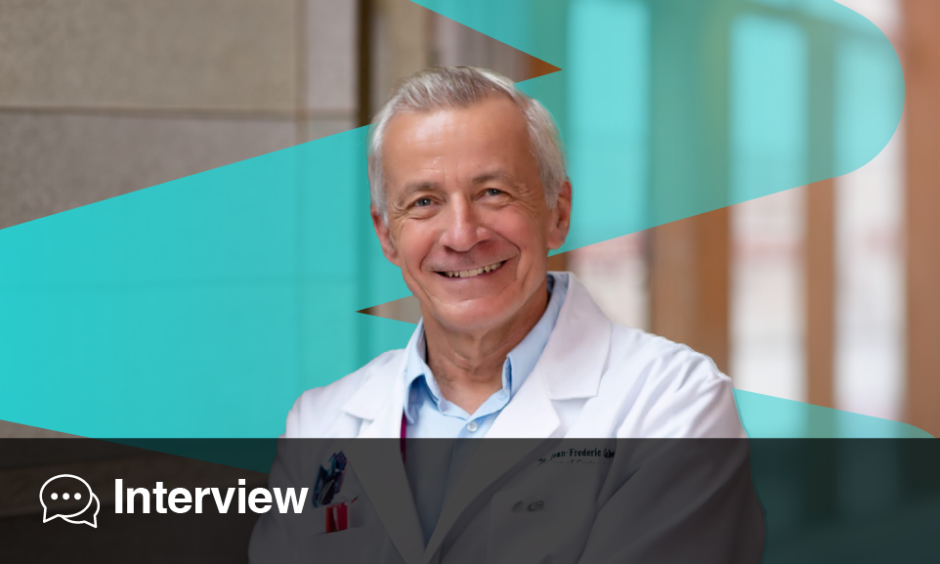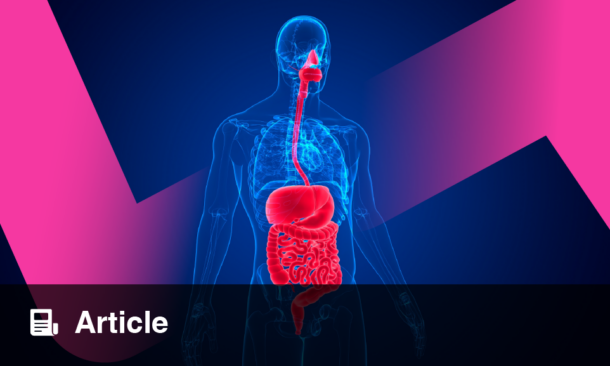Jean-Frederic Colombel | Professor, Icahn School of Medicine, Mount Sinai; Director of the Susan and Leonard Feinstein Inflammatory Bowel Disease Clinical Center, Mount Sinai, New York, USA
Citation: EMJ Gastroenterol. 2024;13[1]:55-60. https://doi.org/10.33590/emjgastroenterol/USEI2836.
![]()
What initially sparked your interest in the field of gastroenterology, inflammatory bowel disease (IBD) in particular?
Very often the biggest decisions in life occur by chance. I went into gastroenterology when I was still very young, starting a fellowship, and didn’t know what to do. I spoke with one of my mentors in medical school, who told me I should go into gastroenterology because it’s very diverse. And why IBD? As soon as I arrived at the department of Gastroenterology in CHU Lille, France, I was amazed by the number of young people admitted with IBD. This was very novel. The disease was originally described in North America, and now it’s all over the world. What was fascinating, and this has never been published, is that in the early 70s there were already a lot of cases of IBD, mostly Crohn’s disease (CD), in Belgium and the Netherlands, and very few cases in Northern France. At that time, in the post-World War II era, we had common meetings with gastroenterologists from Belgium, and they very often presented their cases of IBD. We didn’t have that, but then within a few years we saw this huge number of patients coming in. I thought this was very interesting and decided to focus on this disease. My goal, with the ambition of youth, would be to find the cause and the cure of IBD Interestingly, we had more cases of CD than ulcerative colitis (UC) in Northern France, which is not usual in many countries, including the UK or Scandinavia, where they have more cases of UC.
In the beginning, when I was treating patients, we had very few therapeutic options: amino salicylates, steroids, artificial nutrition, enteral and parenteral nutrition, and surgery. Patients were struggling with long term exposure to steroids, iterative surgeries, and still dying from complications. I was lucky enough to surf the wave of the development of the immunomodulators such as thiopurines, and then biologics, and more recently small molecules. I arrived at a time when the research and the medical care for IBD exploded. With my mentor, Antoine Cortot, we launched the first epidemiological study looking at the incidence of IBD in Northern France, which comprises the departments of Nord, Pas-de-Calais, Somme, and Seine-Maritime. We published our first data in the 80s showing a very high incidence of CD and lower, but still quite high, incidence of UC, as well as some very interesting peculiarities, such as a high number of multiplex families with IBD.
I rapidly focused my attention on those families which were unique, including one with six out of nine children with CD, and one with the two parents and their four kids with CD. Their description raised the attention of HJ Van Kruiningen, a pathologist from Hartford, Connecticut, USA, and an IBD expert who was seeking an infectious cause for CD. We visited together these families living in rural areas of Northern France, published their pedigrees and clinical characteristics, and collected blood and stool samples, but our quest for an infectious agent was negative.
You have co-authored more than 1,100 peer-reviewed papers, making you one of the most published gastroenterologists in the world. What do you believe have been the most significant developments in IBD treatment in recent years?
If there is one worth mentioning, it’s the development of new drugs, biologics and small molecules, for the treatment of IBD. These drugs are now able not only to treat the clinical symptoms, but also to heal the gut mucosa of patients, thus altering their natural history and risk of disease progression towards surgery and disability.
I still think that it is the publication of a case report and a case series by Sander van Deventer from AMC in Amsterdam that revolutionised the landscape of IBD therapy. Sander was originally working on an antibody against TNF-α, the ancestor of infliximab, for the treatment of sepsis, which was a failure. He then published a case report showing the clinical efficacy of this antibody in a refractory case of CD, and subsequently with his team a case series showing not only clinical efficacy of the anti-TNF in CD, but also, for the first time, evidence of endoscopic healing. This was so striking that the endoscopic pictures made the front cover of the journal. I believe that, at least in part, Sander’s clinical intuition opened a new era in the treatment of IBD.
Are there any areas of IBD research that merit greater attention?
There are still many, but I’d like to mention two. One major problem is that there is more and more data showing that if you treat patients early, this makes a significant difference. Often, by the time we start biologics, patients have already been suffering for several years. Retrospective data from clinical trials show that success of medications, including biologics and small molecules, especially in CD, are higher when given to patients early with relatively short disease duration compared to long disease duration.
Recently, the PROFILE study from the UK, where the median disease duration at inclusion was less than 2 weeks, showed that the clinical remission rate obtained by a combination of infliximab and thiopurines can reach 80%. So, early diagnosis and access to the appropriate medication is key. Unfortunately, in our IBD Center, as everywhere else, we see daily patients arriving too late, when the disease has already progressed. Therefore, one area that merits much more attention is improving access to care in the very early phases of the disease, which means early diagnosis and proper management. This is a growing problem with the increasing number of IBD cases. A study we conducted with the Crohn’s & Colitis Foundation in the USA 2 years ago revealed that approximately 50% of patients with CD had to wait more than 2 years to receive their diagnosis. So, we need to start by getting these patients in the clinic very early, making a proper diagnosis, and starting the medication from the beginning. This would be one of the biggest improvements in the treatment of IBD.
The second point is that, while we now have highly sophisticated techniques to look at the immune system and the microbiome, now including AI, we still need to explain some “basic” clinical questions. For instance, when scoping patients with UC, the disease often appears active in the rectum, sometimes extends to the sigmoid, and then suddenly stops. Why is there this sharp limit? Strikingly, the disease can extend within 24 hours, and these patients are the most difficult to treat, often requiring a colectomy. Nobody has yet been able to explain this sharp demarcation.
On the other hand, when we scope a patient with CD, the pattern is different. You might see ulcerations in the rectum, then nothing, then in the right colon, then nothing, and then in the ileum. Here, again, what explains this anatomic distribution?
From an epidemiological perspective, we need to take into account that, in the near future, most cases of IBD will occur in India and Asia, shifting away from being primarily a European or American disease. This will pose a lot of problems in terms of resources and access to care.
Throughout your career, you have made important contributions to the field of IBD, including the identification of NOD2 as a susceptibility gene for CD, and the development of the anti-S. cerevisiae antibodies (ASCA) test, which is still the most sensitive and specific serologic marker for CD. Can you tell us more about these discoveries, and how they are still impacting patient care today?
Regarding the NOD2 discovery, I remember attending one Digestive Disease Week (DDW) in the 80s, where I heard a talk about discovery of genes involved in colon cancer in families. I thought, why shouldn’t we do the same for CD? That was the beginning. We recruited CD families together with several European colleagues and collaborated with brilliant geneticists in Paris, Jean-Pierre Hugot and Gilles Thomas, which eventually led to the discovery of NOD2. In our first paper in 1996 we were able to locate a CD susceptibility gene on chromosome 16, which was later identified as NOD2 in 2001.
Since then, more than 200 susceptibility genes for CD have been discovered, but NOD2 is still one of the most important. These discoveries have led to amazing progress in understanding the pathophysiology of CD, but direct translation to the treatment of patients is still lagging.
Following the genome ‘wave’, research interest then focused on the microbiome thanks to the discovery of new techniques to understand its composition and function. We contributed to this research with the discovery of a new pathovar of Escherichia coli associated with CD. The story started with our collaboration in Lille with our microbiologist Christel Neut who, when looking at samples from ileal CD, noticed that there were a lot of E. coli colonies on her dishes (it was only cultures at that time). We sent these E. coli cultures to a French international expert in E. coli, Arlette Darfeuille-Michaud from Clermont-Ferrand, and one month later, she sent us a letter confirming it was a new pathovar of E. coli with very specific adhesive and invasive properties, now known as adhesive, invasive E. coli (AIEC), strain LF82. Very few people know that LF stands for Lille, France. This research has since blossomed under the leadership of my late friends Arlette Darfeuille-Michaud and Nicolas Barnich. The story sill goes on, and we are now working on a bacteriophage specific to AIEC that we administer orally to patients with CD, with the hope of specifically “decontaminating” their microbiome.
The story behind the ASCA discovery is also interesting. A paper published in Scotland in the 80s showed antibodies against food antigens such as Saccharomyces cerevisiae in the blood of patients with CD. I thus got in touch in Lille with Daniel Poulain and Boualem Sendid, world leading yeast experts. Their group selected several different yeasts from beers and, using the most reactive one, developed a test named ASCA, which is still the most sensitive serological test for CD. The research on ASCA is still very active with the most recent discovery we made with Salomé Pinho from Portugal, published last month, of an association between occurrence of ASCA and changes in glycosylation profiles in the blood that can precede the occurrence of CD by up to 6 years. Pinho’s group also published, in the same paper, evidence that ASCAs may play a pathogenic role in CD and are not just simple bystanders.
Can you explain the concept of ‘treat-to-target’ in IBD? What are the current treatment targets in CD and UC?
When I was still a fellow, the French Groupe d’Etude Thérapeutique des Affections Inflammatoires Digestives (GETAID), led by Robert Modigliani, conducted in the 80s a clinical trial showing that corticosteroids were able to induce clinical remission in CD. When those patients were scoped at the end of the clinical trial, some were also in endoscopic remission, and some were not, but their long-term outcome was basically not different. The GETAID then concluded that targeting endoscopic healing beyond clinical remission was unnecessary. This later proved to be wrong.
Then, new drugs like thiopurine and infliximab came along, which were much more effective than steroids in healing the mucosa. This is where the ‘treat-to-target’ concept emerged. Along with one of my former fellows, Laurent Peyrin-Biroulet, now one of the most famous international experts in IBD, and the International Organisation for IBD (IOBD), we published the ‘treat-to-target’ guidelines proposing that the target in CD and UC should not only be clinical, but also endoscopic remission. This was mostly based on retrospective data, which showed that achieving both clinical and endoscopic remission was associated with a lower likelihood of disease progression with a lower risk of surgery and complications.
The concept is still evolving. For instance, in CD, should we aim beyond endoscopic remission to achieve transmural healing? For UC, should we go beyond endoscopic healing to histological healing? I always say to my patients that it’s like an iceberg; there are layers of healing: clinical, endoscopic, histological, and maybe even molecular. Retrospective data in UC suggest that achieving not only clinical and endoscopic but also histological healing could be associated with better long-term outcomes. However, this level of remission is difficult to achieve, and the benefit of these new targets has not yet been demonstrated in a prospective study.
There is actually an ongoing international study called VERDICT, led by Vipul Jairath from Canada, that could answer this question. In this large international prospective study, one group of patients is treated based on clinical symptoms, the second based on clinical and endoscopic remission, and the third based on clinical, endoscopic, and histological remission. The primary 2-year endpoint is lack of progression, including surgery and complications. We should know soon from this trial what is the desirable target in UC.
You are a strong advocate for the prevention of IBD, as we are still far from a ‘cure’. What approaches should be taken by patients and clinicians to reduce the risk of IBD? How do these approaches vary between CD and UC?
This is my passion. As mentioned earlier, a key word in IBD is ‘early’. But even if you treat patients very early after diagnosis, it’s not a cure, because cure means no disease and no need for treatment. Unfortunately, we, and others, have conducted several studies showing that, if you stop medications, even in patients in deep clinical and endoscopic remission, most of them will relapse. This is why I believe the real cure lies in catching IBD even earlier than early, meaning, before the first symptoms appear. This concept, which was originally seen with a lot of scepticism, is now gaining momentum, not only for IBD but also for other immune-mediated diseases, such as multiple sclerosis and rheumatoid arthritis.
To me, the story started with a fascinating paper published in 2002, showing that antibodies associated with systemic lupus erythematosus can be detected in the blood of people prone to develop the disease up to 10 years before clinical symptoms. This study leveraged a unique resource which is the blood repository of the U.S. Department of Defense. This is a biobank that contains millions of sera from USA army recruits who provide blood samples starting from enrolment, and then every 2 years. Among those young people who were healthy at time of recruitment, some have developed IBD or other diseases. You can then get access to the sera of those young patients at diagnosis and back to up to 10 years earlier, allowing to trace the development of the disease using biomarkers. In close collaboration with our colleagues from the Army we have published several papers, under the acronym PREDICTS, reporting for instance the presence of microbial antibodies and proteomic and glycomic signatures preceding the development of CD. These studies are offering unique perspectives regarding what may cause the disease, but should also allow to build a serologic risk score that could be used for selecting candidates for future prevention studies.
Different designs have been used in other cohorts throughout the world, such as the Nurse Health Study Cohort (NHS) or the remarkable Genetic, Environmental, and Microbial (GEM) cohort led by Ken Croitoru in Canada, which prospectively recruited 5,000 first-degree relatives of patients with CD and identified, after years of follow-up, changes in blood markers but also in the microbiome associated with the development of CD in these family members.
It is obvious that we need to work together since not one cohort will provide the answer. This is why we have established the PROMISE consortium supported by the Helmsley Foundation between PREDICTS, NHS, and GEM to validate the predictive biomarkers, identify therapeutic targets, and hopefully, in the near future, start a prevention trial. In parallel, a very ambitious project led by Geert D’Haens, from Belgium, and myself, named INTERCEPT, has recently been funded by the European Commission with the ultimate goal to launch the first prevention trial in first-degree relatives of patients with CD.
Regarding one of your questions, our search for predictive biomarkers in UC has been so far more difficult, although we recently identified the presence of antibodies against an integrin (αvβ6) in the blood of patients with UC up to 10 years before diagnosis.
Now, what does that mean today for those at risk for IBD, especially relatives of patients? Nothing concrete yet, but they should be aware of these efforts, and help us in this research. Very simple things can still be recommended for children at risk of developing IBD: anti-inflammatory diet avoiding ultra processed food as much as possible, avoiding the use of antibiotics, especially during early childhood, avoiding active and passive smoking, and generally being aware of the risk of IBD for an early diagnosis.
You have set up an impressive network of multiple local, national, and international collaborations for IBD research, including the GETAID. You have also served as President of the European Crohn’s and Colitis Organisation (ECCO), and Chair of the International Organisation of Inflammatory Bowel Disease (IOIBD). Can you tell us more about the goals and mission of these organisations?
I have two mottos that I always tell my fellows: don’t be a follower and think outside the box, and value collaboration and networking. I think these are the two keys to a successful career. This is what I’ve done my whole life.
When I was in France, I was an active member and president of the GETAID, which has conducted a lot of important studies that would have never been pursued by pharmaceutical companies, such as research on the effects of stopping medications. This was networking at the national level.
At the European level, I am member and past president of ECCO. This organisation was born in the mind of my Italian friend Renzo Caprilli, who told me: “Why shouldn’t we try to do something about IBD at the European level and launch ECCO?” I was telling him this would never work. I was pessimistic. The first meeting of ECCO was in Amsterdam, in the Netherlands, with few attendees. Fifteen years later, ECCO has grown tremendously and is now the number one organisation in the world for IBD, networking across European countries. Apart from the meetings, ECCO also publishes guidelines, clinical trials, and is supporting research through multiple grants. It has even expanded beyond Europe, with a lot of members from India, Australia, Africa, and Asia. This has been an amazing success, thanks to the vision of very few people who were there at the beginning: Renzo Caprilli, Geert D’Haens from Belgium, Walter Reinisch from Austria, and Miguel Gassul from Spain. I was the first elected President of ECCO in 2009; it wasn’t very competitive back then. These days, if you want to be elected as a president, it’s like the USA election; you need a campaign.
The third organisation is IOIBD, which started in the UK with very few people. It was originally created by Sidney Truelove from Oxford and was long considered an “old man’s club”. It was a very small group of key opinion leaders from all over the world, meeting once a year to discuss IBD in a nice venue. But it has expanded a lot now, and IOIBD has become a very active international organisation. I was chair of IOIBD in 2010. IOIBD is now supporting care and research in IBD in the whole world, and actively publishing expert position papers.
In simple terms GETAID was France, ECCO was Europe, and IOIBD was the world.
What would you say your proudest achievements have been within these organisations?
By far, my proudest achievement in my career is the promotion of young people. As a testimony, I received this year the American Gastroenterology Association (AGA) Immunology, Microbiology & Inflammatory Bowel Diseases (IMIBD) Section Research Mentor Award. I’ve received several prizes in my life, but maybe this is the most important one, because this is what I have been doing my whole life. It’s so rewarding to see my fellows becoming IBD key opinion leaders in many countries. This is the most important to me: boosting their career, helping those people, and changing their life. I have published more than 1,100 papers but when I die, within 6 months, it will be forgotten. The only thing that remains is the life of people that you have changed: first your patients, and then your fellows. They will remember you.
Where can we expect to see your research focus lie in the near future?
I really want to focus on prediction and prevention of IBD. I’m pretty certain I will not see the end of it, but at least I will have been there at the beginning!








